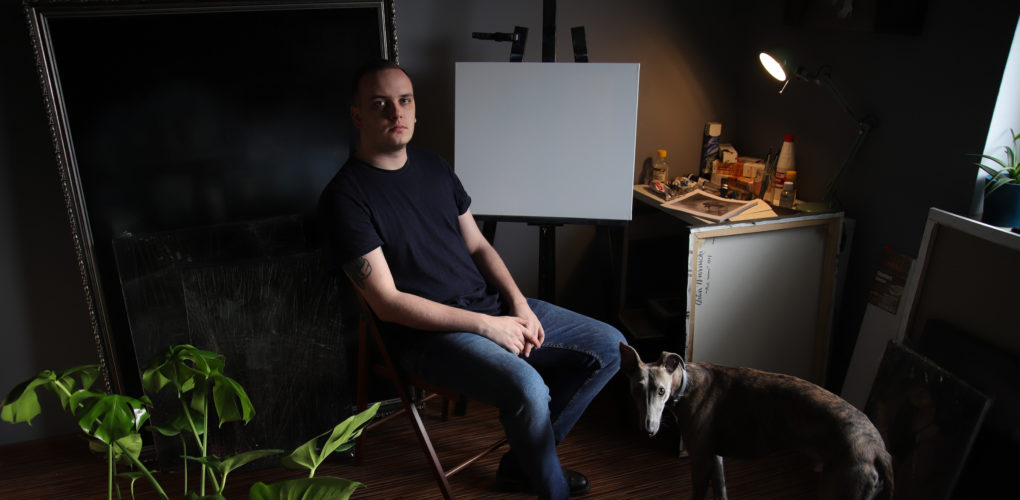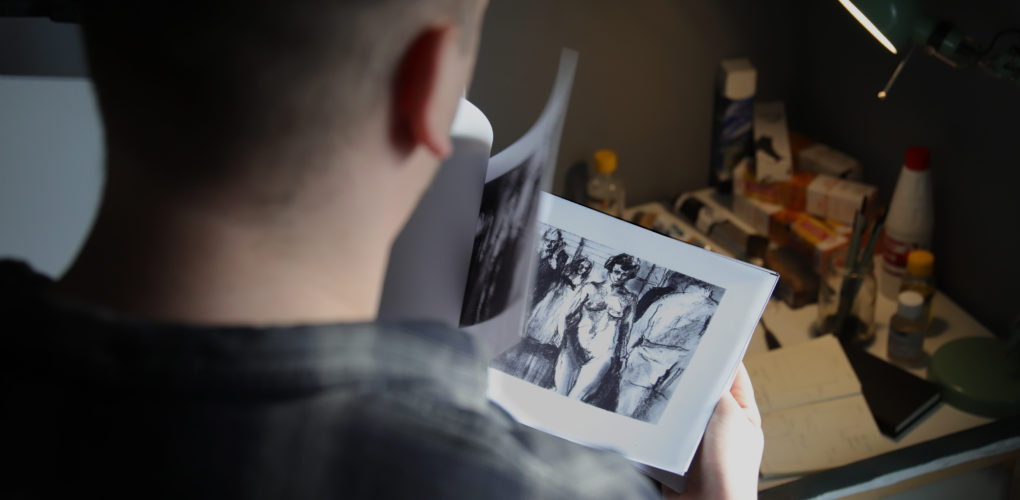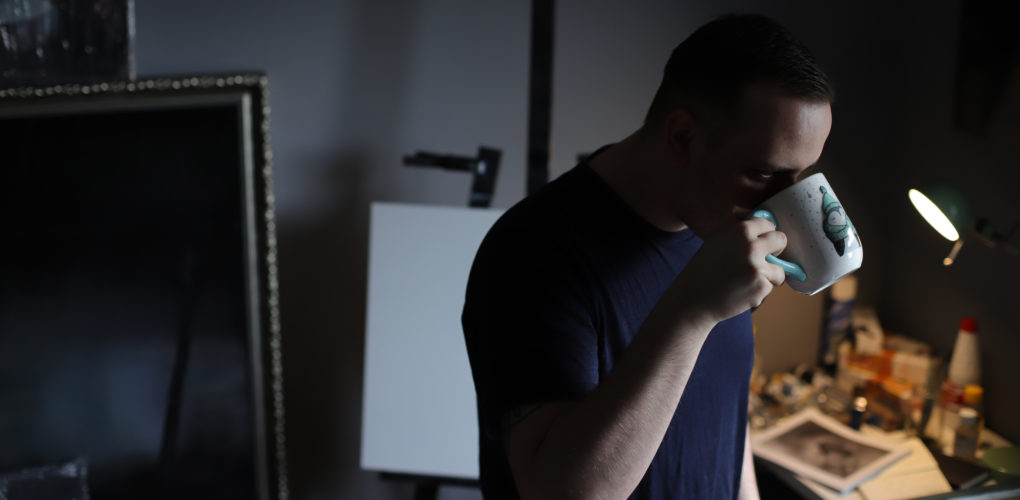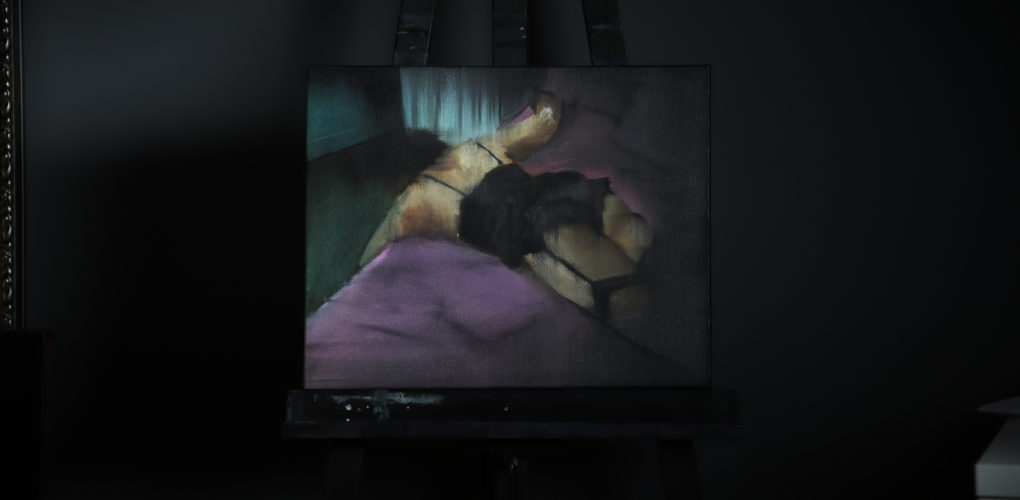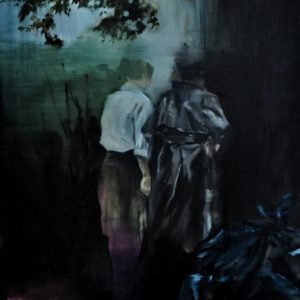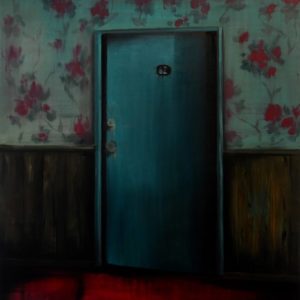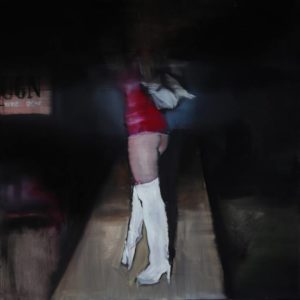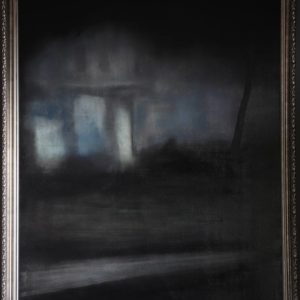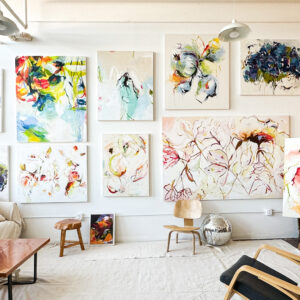One to Watch
 The Neo-Noir Paintings of Artur Wiernicki
The Neo-Noir Paintings of Artur Wiernicki
The Polish artist Artur Wiernicki captures the eerie and the strange within seemingly mundane subject matters and landscapes. Influenced by his deep appreciation for cinematography, his neo-noir inspired paintings intuitively portray the elements of the aesthetic, exploitation movies, “low culture” and the dark side of human nature.
Artur received his degree from Eugeniusz Geppert Academy of Fine Arts in Poland. He has featured in a number of joint and solo exhibitions, including his solo exhibition “Neuromans” at Socato Gallery and his joint exhibition with Michal Sikorski, “2016 Lincz” at md_s Gallery.
What are the major themes you pursue in your work?
I have always been into movies and the variety of worlds it creates. Ever since I started my artistic career I have referred to cinematographic works of arts. It wasn’t that I wanted to paint over some of my favorite shots or movie characters. What I’m trying to achieve in my works is to grasp the unique atmosphere of the scene, mysterious aura that leads the viewer for a further investigation. Major themes of my neo-noir paintings (what I like to call them) are hotel rooms and corridors, areas on the side of the road, woods, unreal places, nocturnal landscapes and strange characters, which create in the imagination of the viewer a coherent story, or, on the contrary, leave them confused. These are seemingly ordinary places but they might be hiding a secret under the surface, a secret that we want to know. To create this kind of feeling is the goal I’m pursuing in my work.
How did you first get interested in your medium, and what draws you to it specifically?
I believe it’s the same story for any painter. I have always had this urge to draw and paint and the decision to keep on working with this medium was just natural. The thing I love the most about this particular medium is that right now, in the digital era where everyone can create stunning images rapidly with a smart phone and an app, a painting remains a painting. With it’s full majesty and once again mysterious, almost metaphysical aura a painting remains unique object, a work of art. And though I work with variety of medium (including digital media) I always keep coming back to easel painting.
How has your style and practice changed over the years?
I don’t think my practice changed a lot. But my style did for sure. I started with very subtle abstract paintings driven with my liking to expressionism in cinema, romantic poetry and James Whistler paintings, what led to a semi-realistic figurative compositions and landscapes inspired by neo-noir aesthetics, exploitation movies, low culture and the dark side of human nature.
Can you walk us through your process? Do you begin with a sketch, or do you just jump in? How long do you spend on one work? How do you know when it is finished?
It all depends. I’m not working with any scenario but I sketch a lot, so if the sketch is intriguing enough I’ll probably paint it. Mostly I prefer free-hand painting. Of course I use photo references or work with a model sometimes but I’m not afraid letting my imagination do it’s work. I like to paint the canvas grey at the beginning and observe it, it helps the composition define itself. I’m not sure how long it takes me to finish a painting. I’m loosing track of time while working. Also it happens that I’m coming back to a certain painting and change it a little. Some say that a painting is never finished, but I know when it is. It’s the moment I’m afraid to give it another touch. Then I wait until it’s completely dry and varnish it.
If you could only have piece of art in your life, what would it be?
It would definitely be Edward Hopper’s painting “Summer evening”. Just imagine it hanging on your wall, waiting for you to step closer and immerse into the night.
If you couldn’t be an artist, what would you do?
I guess I would be working night shift as a taxi driver just to wander around the city when it sleeps and observe those who don’t. Or maybe a mortician. A gloomy profession for sure.
